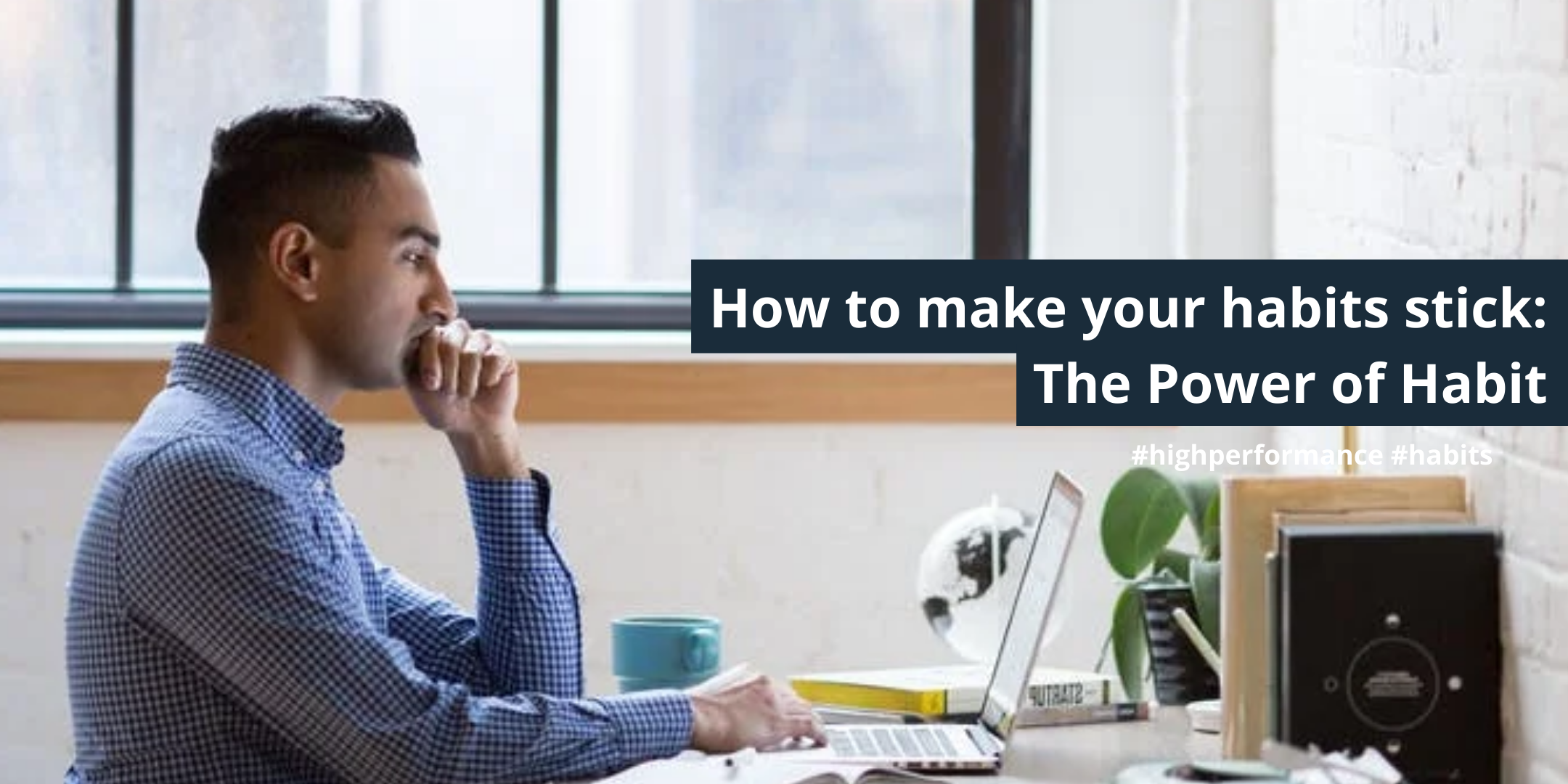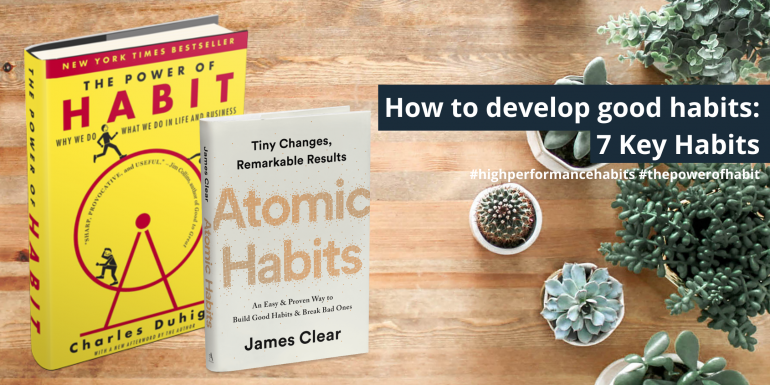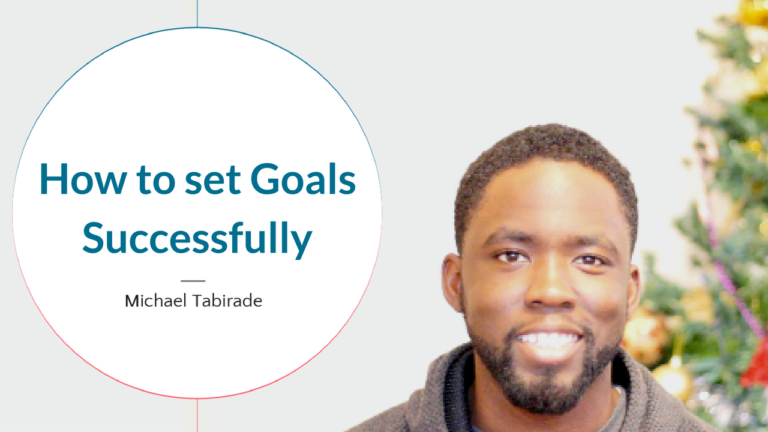The Power of Habit – How to make your habits stick!
In this article, I’m going to be talking about the power of habit and how to make your habits stick, and it’s going to be based on my experiences and what I have learned along the way.
Introduction
When taking on new habits there needs to be some sort of high level strategy and planning. Furthermore, you should adopt systems thinking and environmental design.
So when thinking about creating new habits, think about the environment that you’re actually completing those habits in. Think about how you can remain consistent more than anything in order for you to be effective.
Whenever entering a new year we start thinking about habits and goal setting and planning and all this kind of stuff. But you need to think to yourself, why do you actually want these specific habits?
Is it conducive to the integrity of the person that you’re trying to become or who you are?
When starting any habit it starts, it starts with brutal honesty. If you can’t be honest to yourself, then you’re not necessarily going to honestly stick to specific habits. And so consistency comes with honesty and allowing it to align with your true self.
Remind yourself to stay on track
I believe it was Jim Rohn you once said:
Never rely on your brain to remember anything.
Jim Rohn
And so this is why we have calendars, to remind us when to do things. We need to get to a point of understanding how we can create triggers and cues in order for us to remember or remind us of what we need to do.We need to have some certain level of structure in order for us to understand what we need to do next.
As social beings, and as social creatures, our brain is accommodated to being social, but structure helps us keep aligned and go above our emotions in order for us to be very focused in terms of what we need to be focusing on. And so make sure to use your calendar effectively and don’t just rely on your brain. Otherwise, you won’t be able to make your habits stick.
Create different levels of expectation
The second thing to do is to set up some sort of accountability system. Many people have spoken about making sure they have some sort of habit tracker that they can tick off or cross off, which is a way of releasing some form of dopamine, allowing them to get excited that they’ve actually completed a task. I think this is a great idea for those people who can actually stick to it, especially when something unexpected happens and messes up your flow and rhythm.
I’ll admit, I can be a bit lazy to that degree in that sense, so I didn’t really use that kind of stuff as I never stuck to it. What I have stuck to is creating three tiers of accountability.
Accountability tier 1
The first thing is having a Trello board that uses that kanban process in order for me to understand what I need to do day to day. That definitely helps in terms of understanding what I need to be focusing on using the rule of one.
Accountability tier 2
The second thing is utilizing my accountability buddy on a weekly basis, and in between sessions, in order to understand how I can better improve based on questions I haven’t necessarily asked myself. Or being asked brutally honest questions that will put me at a point where I’m exposed to actually being my true self, exposing me to potential flaws and challenges I am missing or ignoring.
Accountability tier 3
The third thing is committing to a mastermind group on a monthly basis, which is a bigger, broader and generic version of an accountability session, and provides the energy, advice, motivation and inspiration to continue doing what I’m doing.
That’s my accountability system in a nutshell. It’s almost like Russian dolls, to the point where I’m always reflecting, reviewing and staying accountable to doing the things I said I was going to do long after the feeling had gone. So an accountability system is really key if you want to stick to doing specific habits.
Keep your habits elastic
The third thing to consider is flexible habits. It’s important to understand that if you create a rigid structure or if you’re too robust in what you’re doing, then it’s likely that you’re not going to stick to the habit.
So there needs to be some sort of flexibility. For example if you have a deadline for a goal, don’t make it a hard deadline.
Maybe there’s a range in terms of your dates, if there is a specific unit of measure that you’re trying to achieve, for example sticking to doing 5-20 press-ups a day. Another example is writing a book. When I wrote my book, I made sure that I focused on writing 100 – 1,500 words a day, where I averaged about 500 words a day. But it’s important to understand that if I didn’t have that flexibility, I would have been too hard on myself and I would have never completed the book in a timescale that I needed to complete it in.
In essence, you need to create flexibility to prevent disappointment and use realism to promote your progress. This makes you effective with making sure that you complete your goals. Your habits may not stick in the long term if you are too rigid! Rigidity isn’t always the best thing.
The Rule of One
The next thing to consider is to utilize what I call the rule of one. What this really means is that you need to focus on one thing at one time. Again Trello is fantastic for this, rather than putting loads of thing in your doing column, maybe you just want to put one thing in your doing column, because again, if you commit to doing one thing, whether it’s for the day or for the week or whatever it is, that’s what your focus is.
And so when you move that card from doing to completed, you get a feeling of satisfaction. So focus on the rule of one, focus on being ultra specific. It’s better to be extreme rather than being on the mean, achieving nothing.
Believe in yourself
I would also say that you need to truly believe that you are the person who can actually commit to these specific habits. It’s fundamental to know that discipline is not enough. You don’t need discipline, you need insight and environmental design.
Insight puts you in a position where you understand intelligently what is required to create smart and flexible habits. In addition, environmental design helps you reduce your distractions.
If you don’t have things in front of you that distract you, you’re not going to get distracted, out of sight, out of mind. It’s synonymous to seeing these dating island TV shows where you know a person is not supposed to be doing something naughty, but they end up doing something naughty because they’ve got a distraction in front of them every single time. And so that says something about willpower.
Willpower is not enough. Willpower is never enough. It exists but for many in a very weak form.
You need to be smart enough to understand what your insight tells you intelligently. But also design your environment so you can actually get results to reduce any form of distractions.
Reduce the distractions; the process takes trial and error. Be thinking about what cues and triggers enable you to actually get the responses that you want. And if they are bad responses that you get, reverse engineer it to understand what triggers those responses. Again, once you understand this, you’re at a Golden understanding of knowing what you need to be doing.
So it’s also about reverse engineering “bad habits”. This creates clear insights in terms of what you need to be doing. This will help you move forward by designing your environment in the right way.
In order to help you, I’ve created a free guide on how to manage your habits for this year. So make sure to access it here.
In addition, you can also watch the video associated with this article. Hopefully this article has shed light on how to make your habits stick!








One Comment
Comments are closed.